In the fast-evolving world of medical technology, innovation is no longer defined solely by data and publications within the laboratory. The true test lies in whether breakthroughs can bridge the gap to clinical application and industrial adoption. Taiwan, despite its well-established healthcare system, strengths in materials science, and manufacturing capability, has long lacked a medical technology brand with a firm foothold in the global market. While many enterprises remain caught in agency models or price competition, value is often diluted. What the industry truly needs is a driving force to carry “research” through to “clinical application.”
Dr. Hsu-Wei Fang, Founder of Biotegy Corporation and Professor of Chemical and Biomedical Engineering at National Taipei University of Technology, has stepped into the industry with this mission in mind. Having spent years at the intersection of chemical and biomedical engineering, he has repeatedly witnessed research achievements remain confined to papers or laboratories, never advancing into clinical practice. This gap revealed to him that, while Taiwan excels in healthcare and manufacturing, it continues to fall short in the crucial “last mile” of translating knowledge into application. Determined to fill this void, he chose to position himself between academia and industry, combining the rigour of a researcher with the pragmatism of an entrepreneur to strengthen the weakest link in the value chain.
Speaking in an exclusive interview with《The Icons》International Leaders Magazine, Dr. Fang reflected on his entrepreneurial starting point. He noted that while many studies carry significant academic value, without clinical adoption they remain confined to the ivory tower. Through Biotegy, his goal is to bring knowledge into industry and embed it within real market needs.
“Research is not the end point. Only by pushing knowledge into the clinic, transforming it into products that can be genuinely used, that can change patients’ lives and drive industry forward, can innovation be considered complete. Otherwise, all efforts remain no more than figures on paper,” Dr. Fang affirmed.
Dr. Hsu-Wei Fang: Innovation Is Only Complete When It Reaches the Clinic
The development of medical devices is a path few are willing to take. From identifying clinical needs, to design, animal testing, regulatory trials, clinical validation, and finally certification and market entry, every stage is lengthy and exacting. The journey often takes years, if not longer, and requires vast financial resources while carrying high levels of risk. For Taiwan’s predominantly small and medium-sized enterprises in the medical device sector, such a burden is almost insurmountable.
“Taiwan does not lack results, but too many outcomes remain stuck at the surface, visible yet never making it into the clinic,” remarked Dr. Hsu-Wei Fang. Faced with overwhelming costs and risks, many companies have chosen the safer route of agency and trading, importing products from major international brands to maintain revenue. While this may provide short-term stability, it has also meant forfeiting the opportunity to build home-grown brands.
After years of observing the industry, Dr. Fang realised that if no one was prepared to take this most difficult road, Taiwan’s medical device industry would remain confined to the periphery of the value chain, without a voice on the international stage.
“Medical devices are not ordinary products that can be made overnight. They require time, clinical validation, and far more patience than other industries,” he explained. It is precisely this lack of patience and long-term commitment that has prevented Taiwan from nurturing brands capable of securing a position in the global market.
Determined to break this cycle, Dr. Fang founded Biotegy Corporation with a different vision from the outset: to open new possibilities for the industry through a gradual yet steady approach. The first step was to support agents in transforming from simple distributors into enterprises capable of truly owning their brands and products. This shift was not merely about technology transfer; it was about helping partners recognise that “MIT medical devices” could rival the quality of international giants while offering cost-effectiveness.
Once this foundation had been established, the second step was to channel resources into genuine innovation, concentrating research and development on high-value medical devices, building patent portfolios, passing rigorous clinical trials, and ultimately pushing Taiwanese innovations onto the international market.
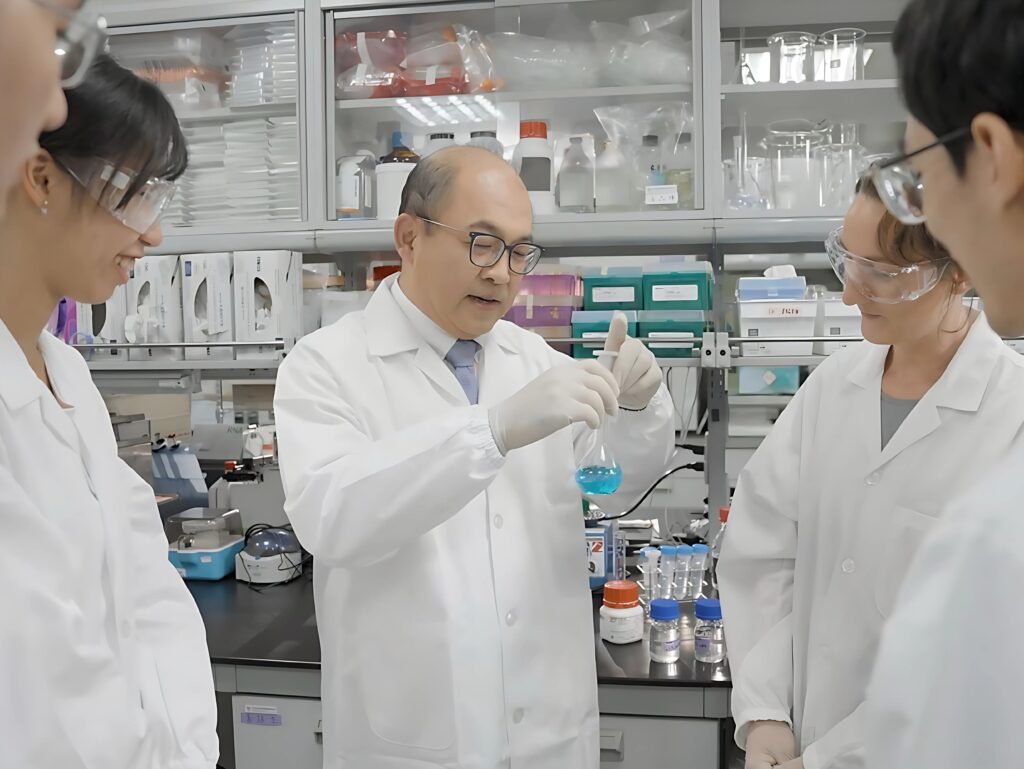
Finding the Answer Between Academia and Industry
For Dr. Hsu-Wei Fang, being both a professor and an entrepreneur is not a contradiction but a mutually reinforcing force. Having taught for many years at National Taipei University of Technology, he is familiar with the rigour of academic research, yet he also knows that the greatest question for students and researchers is often not “Can it be published?” but “Can it truly be used?” This environment gradually made him realise that research which cannot be designed to reach the clinic and the market is ultimately incomplete. “At the university, I can ask ‘why’ without limitation; in industry, I must answer ‘how’, how to make it work in practice,” he explained.
This shift of roles gave him a clear view of the industry’s greatest gap. It is not the absence of talent or results, but the lack of people willing to take responsibility for carrying research through to the very end. How patents are structured, how clinical trials are arranged, and how funding is allocated are all sources of pressure, but they are also choices to be made.
“Many studies are not without breakthroughs, yet they stall because no one is willing to take the hardest step of pushing them into the clinic. That step is the most difficult, but it is also the most decisive,” Dr. Fang observed.
In his view, research should be judged from the very first day by its ability to be applied. This is why he has chosen to dedicate his time and resources to the most challenging part of the value chain. Only when someone is prepared to bridge this gap can the true value of innovation be realised.
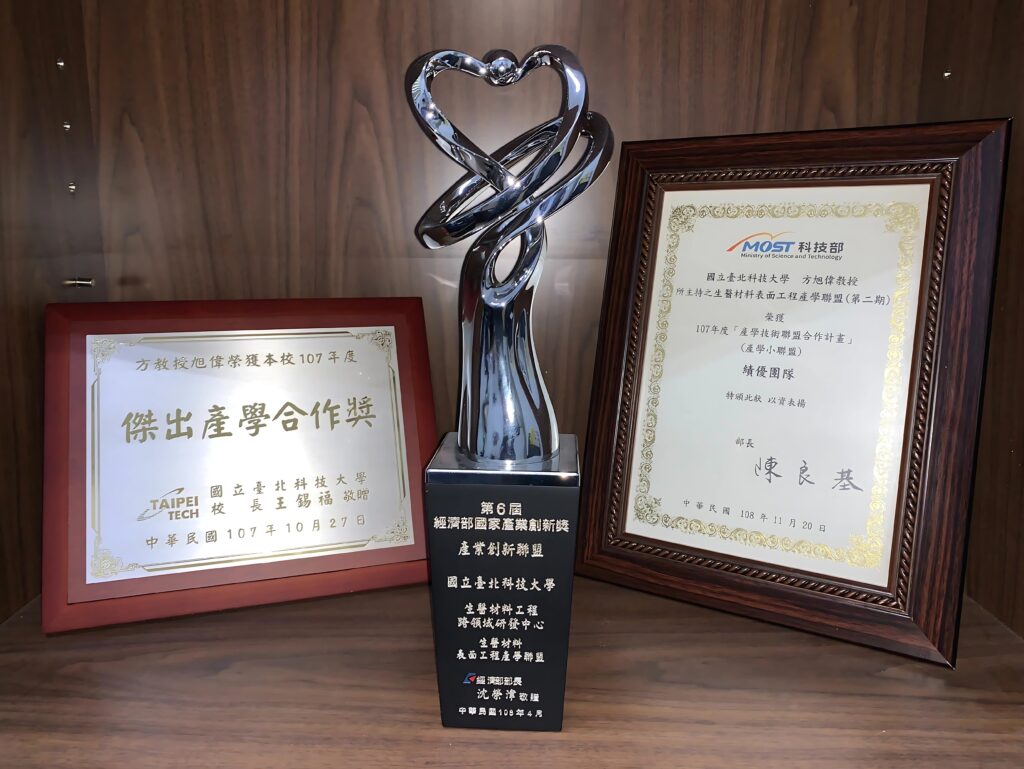
Bringing Everyone to the Same Table to Make Processes Faster and Risks Smaller
For Dr. Hsu-Wei Fang, Biotegy Corporation has never been merely a company; its true value lies in acting as a connector. The development of medical devices often spans academia, clinical practice, manufacturing, regulation and sales, with any single break in the chain capable of halting an entire project. Biotegy’s role is to align these forces on the same track so that research can move more swiftly into products ready for clinical use.
“Academics understand the technology, doctors know the needs, factories have the ability to produce, and regulators ensure compliance. Yet if each works in isolation, the product will never materialise,” Dr. Fang explained.
This integrative capacity is what he regards as the industry’s greatest lesson, drawn from years of observing international markets. In Europe and the United States, he saw different companies jointly investing in standardised testing simply to shorten product verification timelines. That was when he realised that industrial progress is not solely about competition, but also about collaboration. Once someone assumes responsibility for bringing the process together, the entire ecosystem stands to benefit.
“What we aim to do is bring everyone to the same table, making processes faster and risks smaller,” he remarked. In practice, Biotegy is not only about developing new technology. It is about transforming clinical problems into engineering solutions, scaling them through manufacturing, and ensuring that both regulators and markets can approve and adopt them. The process is more complex than research alone, yet it offers a far greater chance of ensuring that outcomes truly reach the clinical setting.
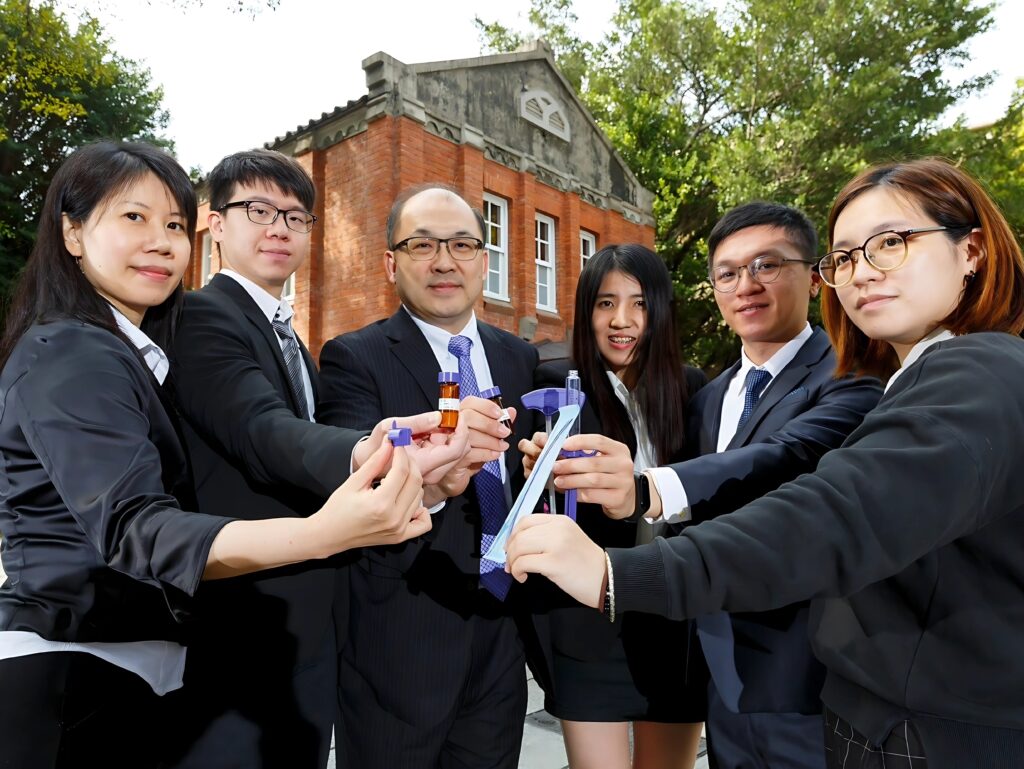
Dr. Hsu-Wei Fang: Taiwan’s Medical Technology Should Not Rely Forever on Agencies
Biotegy Corporation’s first challenge was to develop barbed sutures and lifting threads entirely from scratch. Though these devices may appear basic, they involve complex hurdles of material design, clinical testing and regulatory review. Normally, securing certification for Class II medical devices takes several years, yet Biotegy achieved approval in just over two years. This milestone not only brought the product successfully to market and earned the trust of doctors and distributors, but also marked a turning point for Taiwan’s medical device sector: for the first time, a local team had demonstrated that it could pass rigorous scrutiny and win market acceptance on its own merits.
“From starting at zero to securing certification, it took us just over two years. The pressure during that period was immense, but the outcome proved that Taiwan does not need to rely indefinitely on agents. We can stand on our own capability and still be recognised by the market,” recalled Dr. Hsu-Wei Fang.
Building on the success of sutures, the team soon pushed into more challenging territory. Within about three years, they secured two Class III medical device certifications: one for a polylactic acid (PLA) dermal filler and another for a modified starch haemostatic agent. These products required rigorous clinical trials and extensive regulatory review, processes that usually take major international companies over five years to complete for a single item. Biotegy, however, managed to accomplish both in quick succession.
“Class III medical devices carry the highest barriers, yet we succeeded, and not just once but twice in succession. For the team, this was not only a boost of confidence but also a clear answer for Taiwan’s industry,” Dr. Fang explained.
Today, these products have gone beyond the domestic market. The PLA filler has already obtained international certification and entered overseas distribution. From sutures to fillers and haemostatic agents, Biotegy’s string of achievements has positioned it as a team capable of delivering both speed and quality, offering Taiwan’s medical device sector a glimpse of new possibilities.
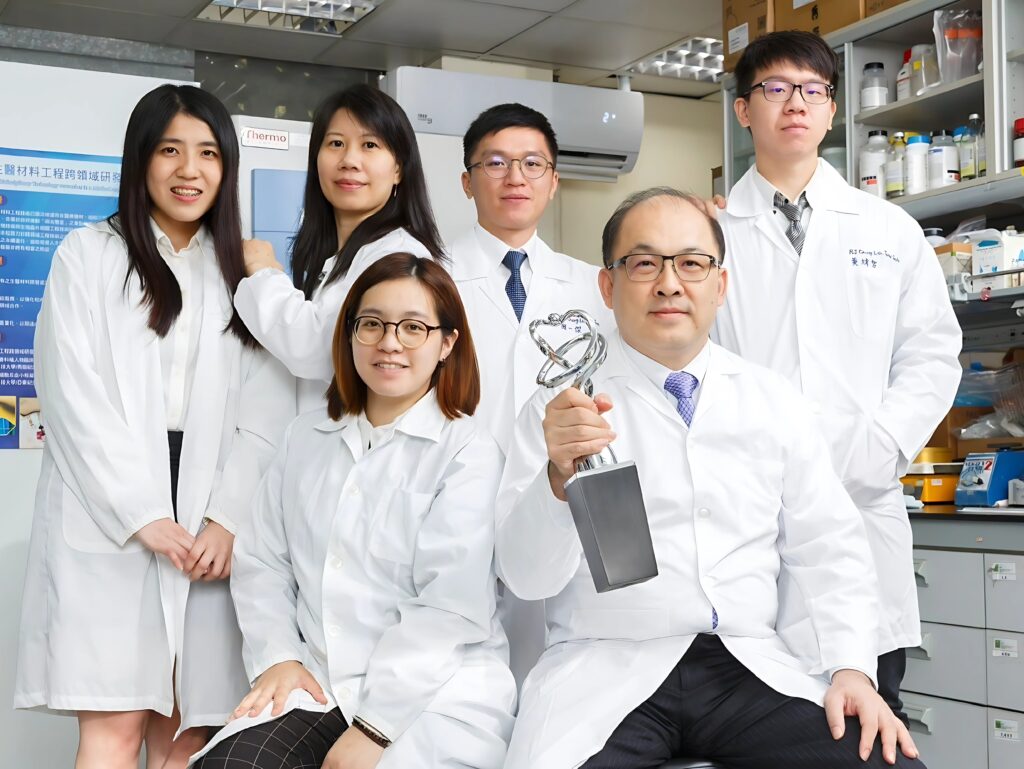
A Differentiated Strategy to Open Global Markets
This September marked a pivotal step for Biotegy Corporation as it took part in the Thailand International Medical Exhibition. For the company, this was not simply a trade fair, but a clear declaration to the world: MIT medical technology is ready to enter the global stage.
“This was our first time abroad, and I wanted people to see more than just one product. I wanted them to see the real research and manufacturing strength of Taiwan’s medical device industry,” said Dr. Hsu-Wei Fang. For him, the decision was not a hasty move, but a natural extension built on the foundation of several successful milestones. In his view, internationalisation requires a solid record as its backbone. Only after establishing a strong domestic presence does a brand have the credibility to step onto the next stage.
At the exhibition, Biotegy set out three objectives: to promote its existing advanced medical devices and secure long-term partnerships with international distributors; to showcase its degradable polymer materials platform and attract contract development opportunities; and to explore strategic alliances while considering future options in mergers, acquisitions and capital markets.
“The real challenge of internationalisation is not merely about exhibiting abroad, but about being accepted by different markets,” Dr. Fang emphasised. In Western markets, demand centres on cutting-edge solutions, while in many emerging markets the first question is whether the product is affordable. Biotegy must balance both, demonstrating technological excellence while ensuring that products remain accessible at reasonable cost.
He illustrated the point with a simple example. Temporary dentures may no longer be considered innovative in the United States or Europe, but they remain in high demand across emerging markets. Success, therefore, depends on tailoring solutions to the conditions of each market so that innovation is not a luxury reserved for the few, but a practical solution available to many.
Biotegy’s international strategy is built on this differentiated approach: using advanced products to prove its technical strength, while deploying affordable solutions to unlock wider markets. This combination of stability and flexibility has allowed the company to showcase a distinctive competitiveness on the global stage.
Starting with the End in Mind: Taking MIT Medical Technology to the World
After a decade of steady progress, Biotegy has already laid a solid foundation for Taiwan’s medical device sector. Through a series of achievements, it has proven that local teams are not destined to rely solely on agency models, but can enter high-barrier markets on their own merits. Yet for Dr. Hsu-Wei Fang, this is only the beginning. He looks to the next ten years with the hope that medical technology will become Taiwan’s next global identity, drawing talent, resources and expertise together.
“One day, I hope medical technology can stand alongside semiconductors as a core industry that attracts both talent and resources,” Dr. Fang noted. Achieving this vision, in his view, requires more than enterprise effort and innovation. Institutional support and a robust ecosystem are just as crucial. He calls on the government to lower barriers to innovation, while maintaining safety standards, so that younger teams have the opportunity to take part. At the same time, start-ups, established companies, academia and investors must join forces in a relay that drives the industry forward. Only then can Taiwan’s medical device sector secure its place in the global market.
For Dr. Fang, “starting with the end in mind” is not just a belief but also a responsibility. By beginning with clinical needs and addressing each gap in turn, research has a real chance of becoming practical products and the industry can gradually build international influence. His decade of work has shown that MIT no longer stands simply for contract manufacturing; it can also represent brands, breakthroughs and values recognised on the world stage.
“Starting with the end in mind means ensuring every innovation reaches the point of real application. Only when it reaches that stage can it change a surgery, transform a hospital, and ultimately shape the future of an entire industry,” he affirmed.
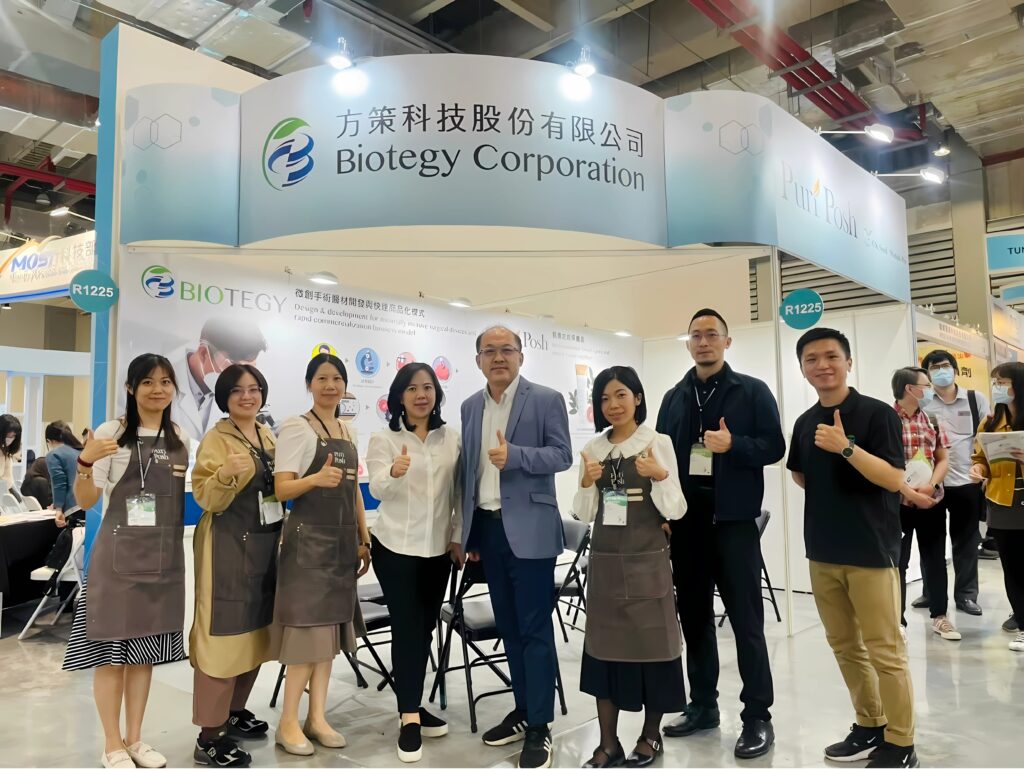
精選推薦: